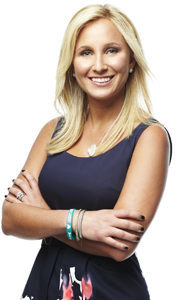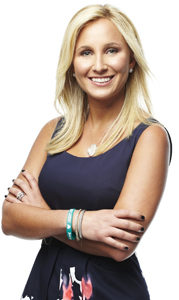
Educating children about the realities of sexual abuse can dramatically reduce their risk of being abused.

Lauren Book, an abuse survivor, has developed a curriculum that specifically helps children and adults identify the signs of abuse and flag the perpetrators.
“We know that one in three girls and one in five boys will become a victim of sexual abuse before graduating the K-12 system, but 95 percent of this abuse is preventable when children and adults are properly educated,” said Book. “We also know that child victims are 3.5 times more likely to disclose abuse if they’re presented with an in-school curriculum such as ours.”
Book’s curriculum helps students learn the red flags of unsafe situations and people, and how to access help if something does not feel quite right — whether it’s a fight with a friend at school, a bad dream or something more serious, like abuse.
Smarter Schools is about making sure “instruction occurs from a place of interactive learning and empowerment through education — not fear,” Book said. The program was developed in partnership with career educators and developmental psychologists to ensure that all lessons are effective and engaging.
Book says implementing Safer, Smarter Schools across her home state of Florida, the country and the world is a vital step toward empowering children to prevent the tragedy of sexual abuse. Pre- and post-effectiveness testing in elementary grades showed that Safer, Smarter Schools promotes a 77 percent increase in knowledge of personal safety, Book says.
Preventing students from becoming victims of child sexual abuse
First, educators and parents need to know that “stranger danger” is a myth: 90 percent of child victims are harmed by someone they — and their parents — know and trust.
“Sadly, this includes family members, neighbors, teachers, coaches and other trusted adults,” Book says. With that in mind, she advises educators to:
- Watch closely for changes in students’ behavior that may provide clues to abuse.
- Beware of unsafe situations and adults behaving unusually with students — giving gifts and extra attention, testing physical and emotional boundaries, and developing a special relationship with vulnerable students, Book says. Learn more at http://DontMisstheSigns.org.
Framing the language of abuse
When talking about personal safety, teachers should choose language that encourages students to express themselves without judgment, Book advises. Words like “good” and “bad” can be difficult for kids to understand when they are eager to please parents and teachers. Instead, words like “safe” and “unsafe” allow children to comprehend a situation without concern about punishment.
“Safe” and “unsafe” are feelings-based words whose meanings are up to the student. “Explain that only they decide if a person, touch or situation is safe or unsafe, based upon how these things make your student feel,” Book noted.
Be watchful for child predators who isolate children
Teachers are a first line of defense against abuse in schools, where extracurricular activities like sports can make children more vulnerable.
“Child predators are very skilled at ‘grooming’ their victims, so educators should watch for other adults who go out of their way to treat a child as special through presents and compliments. Grown-ups who regularly isolate children for special tasks or extra training may be looking for abuse opportunities,” said Book.
“There may be physical contact in the form of hugging, tickling or wrestling as a sign of affection and, if the activity is allowed, the behavior can then progress to increasingly intimate acts. If you notice a child that is suddenly hesitant about participating in an adult-led activity, engage them in conversation.”
Developing a home-to-school support system
Each child needs to have a support system extending from home to school. One of Book’s favorite activities from the Safer, Smarter Schools curriculum is also one of the most simple: the Trusted Triangle.
In this exercise, children draw a triangle and write their name in the center. At each of the points, they write the name or draw a picture of a grown-up they trust and can talk to about anything. A teacher working with children on this exercise makes sure the adults identified are old enough to drive a car, and that at least one person in the Trusted Triangle is not a family member. Children are encouraged to keep telling until they get the two H’s: Heard and Helped.
Giving kids tools to speak up about abuse
Book says the PK-3 portion of the Safer, Smarter Schools curriculum has been taught to over 1.1 million students in 45,000 classrooms in Florida. It is also being implemented in or considered for implementation in Pennsylvania, Utah, California, Georgia and New York. It’s also being used internationally through a partnership with UNICEF.
Book hopes it will be taught to all students in the U.S. and beyond in the coming years.
“I myself was a victim of abuse for six years as a child at the hands of a trusted and well-loved caretaker. While I cannot be sure that a curriculum like Safer, Smarter Schools would have prevented my abuse from happening in the first place, I am certain — beyond the shadow of a doubt — that it would have given me the tools to speak up much sooner than I did,” she concluded.
Erin Flynn Jay is a writer, editor and publicist, working mainly with authors and small businesses since 2001. Erin’s interests also reach into the educational space, where her affinity for innovation spurs articles about early childhood education and learning strategies. She is based in Philadelphia.
Categorized as: Tips for Teachers and Classroom Resources
Tagged as: Early Childhood and Elementary (Grades: PreK-5), High School (Grades: 9-12)
